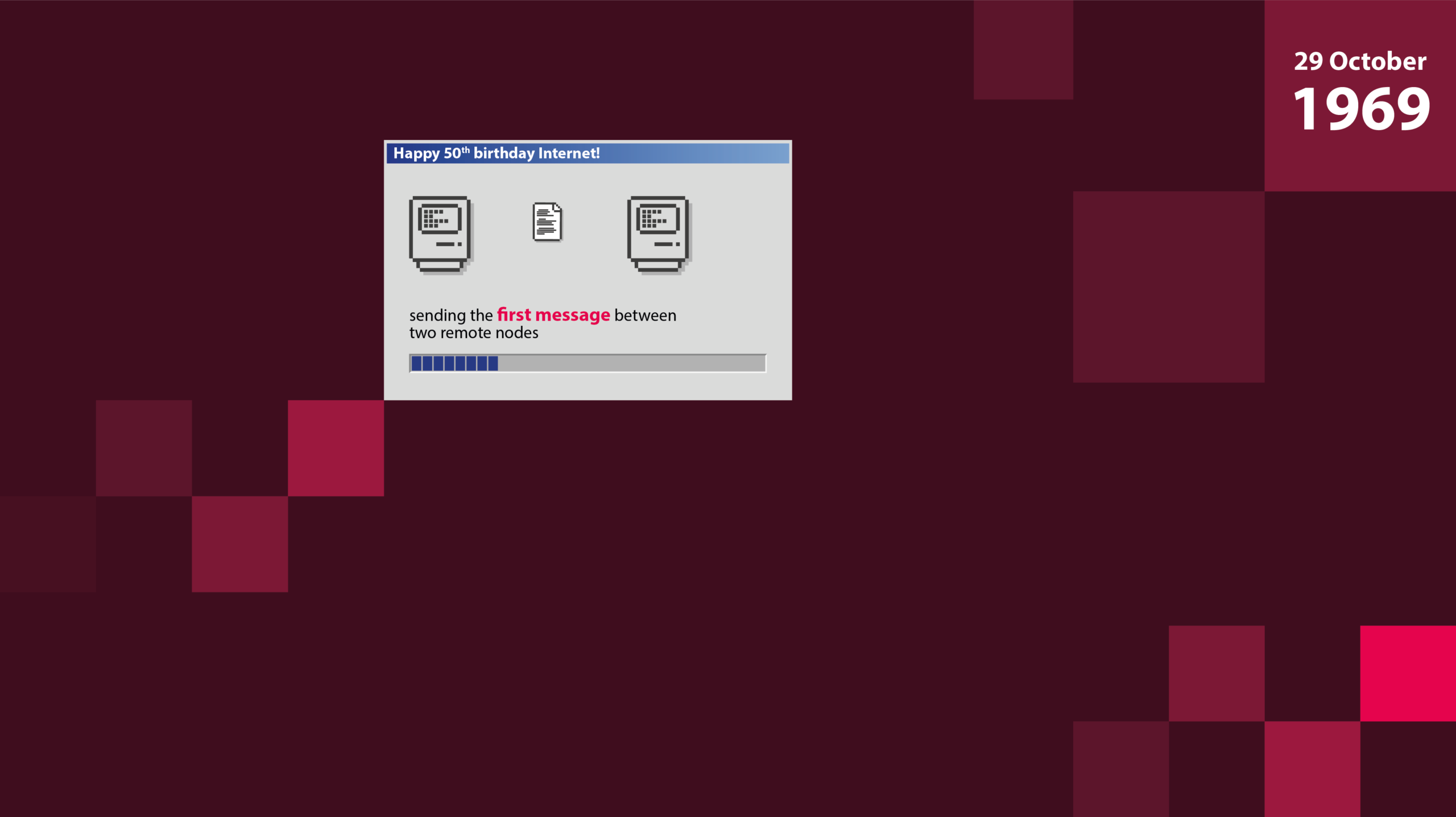1969. The year of the first Concorde test flight, the 30th Venice Film Festival, the Apollo 11 mission landing the first humans on the moon, but also – and highly important for you to be able to read this on your device right now – the first message being sent over what we now know as ‘the internet’.
It was Wednesday, the 29th of October to be precise, when the Advanced Research Projects Agency Network (ARPANet) was used to send the first message between two remote nodes through packet switching techniques invented by two computer scientists, Briton Donald Davies and American Paul Baran, based on the theoretical work of Leonard Kleinrock. From the first typed message of “lo” (the system crashed before Charley Kline could finish typing “login”!) to today’s networks supporting a huge range of services at every-increasing speeds and capacities, internetworking technologies have developed at a pace those early researchers could never have imagined.
The need for reliable research and education networks
Just as the internet grew from a research focused project then, research and education are still driving the need for internetworking. “The problem [for research] is much like small civilizations or small cities trying to develop separately, not having any way of sharing what they learn with other groups and if that continues to happen you don’t have a civilization. So, the necessity was to provide a mechanism so that what was learned in one place could be transferred effectively and directly to other places without redoing it all and learning it all over again in each place.” – Lawrence G. Roberts, Program Manager and Office Director at the Advanced Research Projects Agency. It is exactly this intention that led to the GÉANT network, which was born from the increasing need for international research collaboration.
Not only were European scientists, researchers and students supported by this new communication system, it also inspired the European Union to introduce the European Research Area, aimed to foster multinational collaboration. Funded by the EU and Europe’s NRENs, the network was built in less than one year, securely interconnecting with partner NRENs. Over the next decade, the available capacity on the network for researchers was increased by a factor of 60 from 155 Mbps to 10 Gbps.
Easy access to fast, reliable connectivity
Through interconnections with 39 national research and education network partners, the GÉANT network is now the largest and most advanced research and education network in the world, connecting over 50 million users at 10,000 institutions across Europe and supporting all scientific disciplines. The backbone network operates at speeds of up to 500Gbps and reaches over 100 national networks worldwide. In addition to the network a wide variety of GÉANT services are making life easier for research, science and education , e.g. the eduroam service which provides WiFi access to students and researchers across more than 100 countries.
Happy 50th birthday, Internet. We love you, a lot.
—
GÉANT Chief Community Support Officer, Klaas Wierenga also known as “father of eduroam” has been inducted to the Internet Hall of Fame, recognised for his invention of eduroam. Read the interview with him here.







